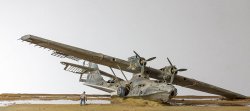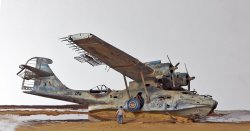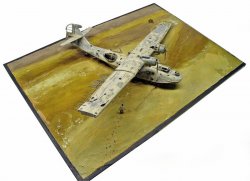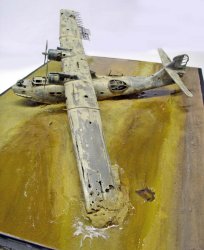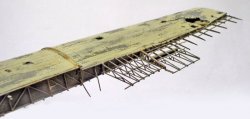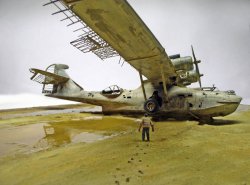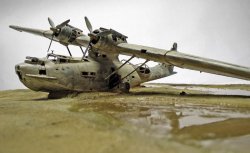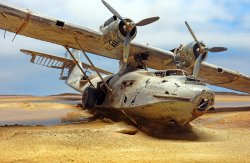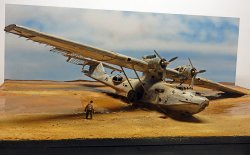
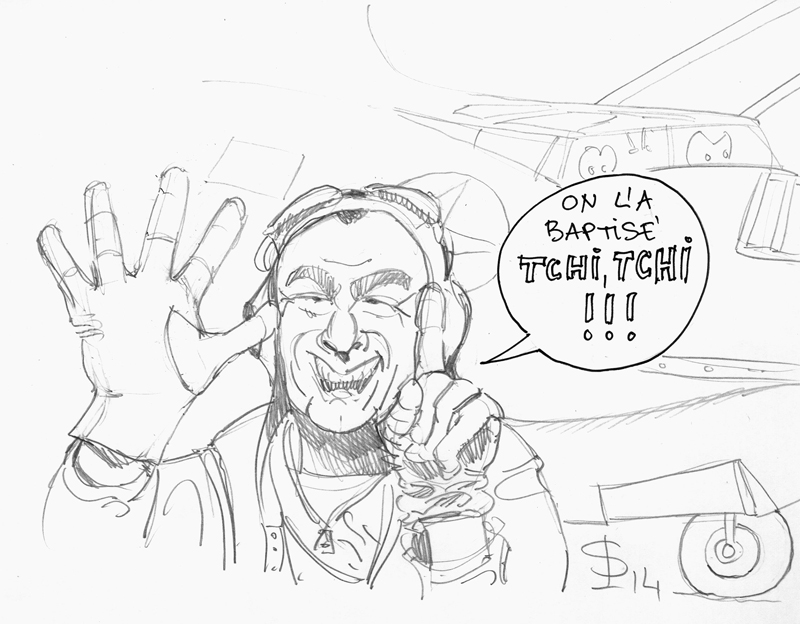
Conçu dans les années 1930 cet hydravion militaire à vu le jour en octobre 1936. Après 3 500 exemplaires construits, il restera l’hydravion le plus répandu de l’histoire aéronautique. Techniquement dépassé en 1944, mais robuste et polyvalent. Il s’est taillé une réputation enviable sur tous les fronts. Il fut le héros de nombreux exploits et sauva nombre de vies… Quarante ans plus tard, il était encore dans les forces aériennes sud-américaines.
Caractéristiques :
Envergure de 31m ; longueur 19 m ; Vitesse maximum : 315 km/h ; poids 15T ; moteurs Pratt & Whitney R-1830-92 – 14 cylindres en double étoile de 1 200 ch ; carburant 7 900l ; armement : 2 – 7.62mm et 2 - 12.7mm ; 8 à 9 hommes d’équipage.
Sur le détroit de Tiran, à l'entrée du golfe d'Akaba, au fond d'un lagon protégé par le cap de Humayd, en Arabie Saoudite, existait encore l'épave d'un hydravion "Catalina". L'histoire était que des journalistes avaient affrété cet appareil pour couvrir la bataille du Sinaï lors de la crise de Suez, en Octobre 1956. L'hydravion s'était fait mitraillé par les troupes égyptiennes et avait dû fuir à l'Est du golfe d'Akaba et y faire un amérissage forcé. Aucune trace de cet incident nulle part. Il serait bien de savoir qui étaient ces journalistes, par où ils étaient revenus, Aqaba, Tabuk ou Al Wadj. Une autre version
(Au printemps de 1960, M. Kendall a fait un voyage autour du monde avec sa femme et ses enfants et son secrétaire et son fils. Un photographe a rejoint le groupe pour couvrir une partie du voyage pour le magazine Life.
Le 22 Mars 1960, ils ont débarqué dans le détroit de Tirana et ancré l'avion à une courte distance de la rive pour y passer la nuit. Ils ont entendu quelqu'un crier, mais n’y ont pas accordée la moindre attention.
Dans l'après-midi du jour suivant, ils ont été attaqués avec des mitrailleuses et des armes automatiques sur un promontoire à proximité. Les enfants ont pu nager vers l'avion. M. Kendal et son secrétaire ont été blessés en essayant de démarrer le Catalina, mais ont réussi à le déplacer d’environ 800 mètres, malheureusement, il s'est échoué sur un récif de corail.
Le tir a duré 30 à 40 minutes et pas moins de 300 balles ont atteint l'avion. Les réservoirs de carburant ont été perforés et 4000 litres de carburant se sont échappés des trous, mais miraculeusement l'appareil n'a pas pris feu. La mer était seulement à un mètre cinquante de profondeur et tous à bord ont réussi à sortir de l'avion et à atteindre la rive.
Sur la plage, ils ont été capturés par un groupe de Bédouins attaché à l'armée saoudienne, qui les avait pris pour des commandos israéliens. Ils ont finalement été fait prisonniers à Djeddah, interrogés et finalement libérés avec l'aide de l'ambassadeur américain. L'ambassadeur a protesté auprès du gouvernement saoudien, mais ils ont refusé d'accepter toute responsabilité pour l'attaque et la perte de l'avion…)
(site warbirdregistry.org) est que l'hydravion s'était fait mitraillé en 1960 par des Bédouins; cette version paraît peu vraisemblable, car les Bédouins locaux n'étaient armés en 1966 que de vieux fusils, pas de mitrailleuses ni même de kalachnikovs; les 300 coups répertoriés sur l'épave auraient représenté une fortune pour eux. Et, en 1966, il n'y avait pas trace de forces armées nulle part sur la côte saoudienne entre Jeddah et Akaba. Il y a là une petite énigme historique à résoudre…
Designed in the 1930s, this military seaplane saw the light of day in October 1936. After 3,500 units built, it remains the most widely used seaplane in aeronautical history. Technically outdated by 1944, but robust and versatile. It earned an enviable reputation on all fronts. It was the hero of many exploits and saved many lives... Forty years later, it was still with the South American Air Force.
Specifications:
31m wingspan; 19m length; maximum speed: 315 km/h; weight 15T; engines Pratt & Whitney R-1830-92 - 14-cylinder double star 1,200 hp; fuel 7,900l; armament: 2 - 7.62mm and 2 - 12.7mm; crew: 8 to 9 men.
On the Strait of Tiran, at the entrance to the Gulf of Aqaba, at the bottom of a lagoon protected by the Cape of Humayd, in Saudi Arabia, still existed the wreck of a "Catalina" seaplane. The story was that journalists had chartered this aircraft to cover the battle of Sinai during the Suez crisis in October 1956. The seaplane was machine-gunned by Egyptian troops and had to flee to the east of the Gulf of Aqaba, where it was forced to land. There is no trace of this incident anywhere. It would be nice to know who these journalists were, and where they had come back from - Aqaba, Tabuk or Al Wadj. Another version
(In the spring of 1960, Mr. Kendall took a trip around the world with his wife and children and his secretary and son. A photographer joined the group to cover part of the trip for Life magazine.
On March 22, 1960, they landed in the Straits of Tirana and anchored the plane a short distance from shore to spend the night. They heard someone shouting, but didn't pay the slightest attention.
In the afternoon of the following day, they were attacked with machine guns and automatic weapons on a nearby promontory. The children were able to swim back to the plane. Mr. Kendal and his secretary were wounded trying to start the Catalina, but managed to move it about 800 meters, unfortunately, it ran aground on a coral reef.
The shooting lasted 30 to 40 minutes and no fewer than 300 bullets hit the plane. The fuel tanks were punctured and 4,000 liters of fuel escaped from the holes, but miraculously the plane didn't catch fire. The sea was only a meter and a half deep, and everyone on board managed to get out of the plane and reach the shore.
On the beach, they were captured by a group of Bedouins attached to the Saudi army, who had mistaken them for Israeli commandos. They were eventually taken prisoner in Jeddah, interrogated and finally released with the help of the American ambassador. The ambassador protested to the Saudi government, but they refused to accept any responsibility for the attack and the loss of the plane...)
(warbirdregistry.org) is that the seaplane had been machine-gunned in 1960 by Bedouins; this version seems unlikely, as the local Bedouins in 1966 were armed only with old rifles, not machine guns or even Kalashnikovs; the 300 shots recorded on the wreckage would have represented a fortune for them. And in 1966, there was no trace of armed forces anywhere on the Saudi coast between Jeddah and Akaba. There's a little historical puzzle to be solved here...















